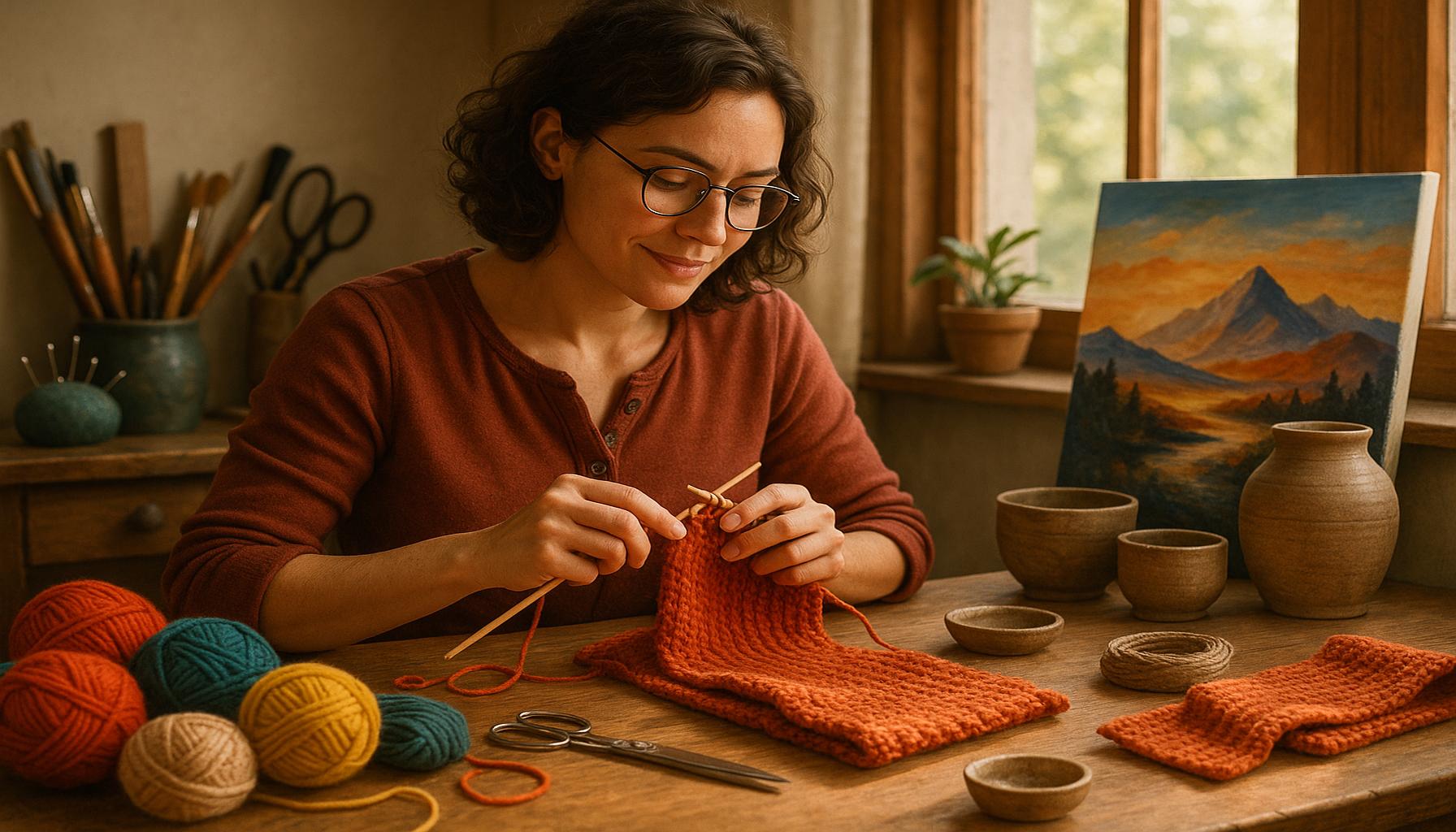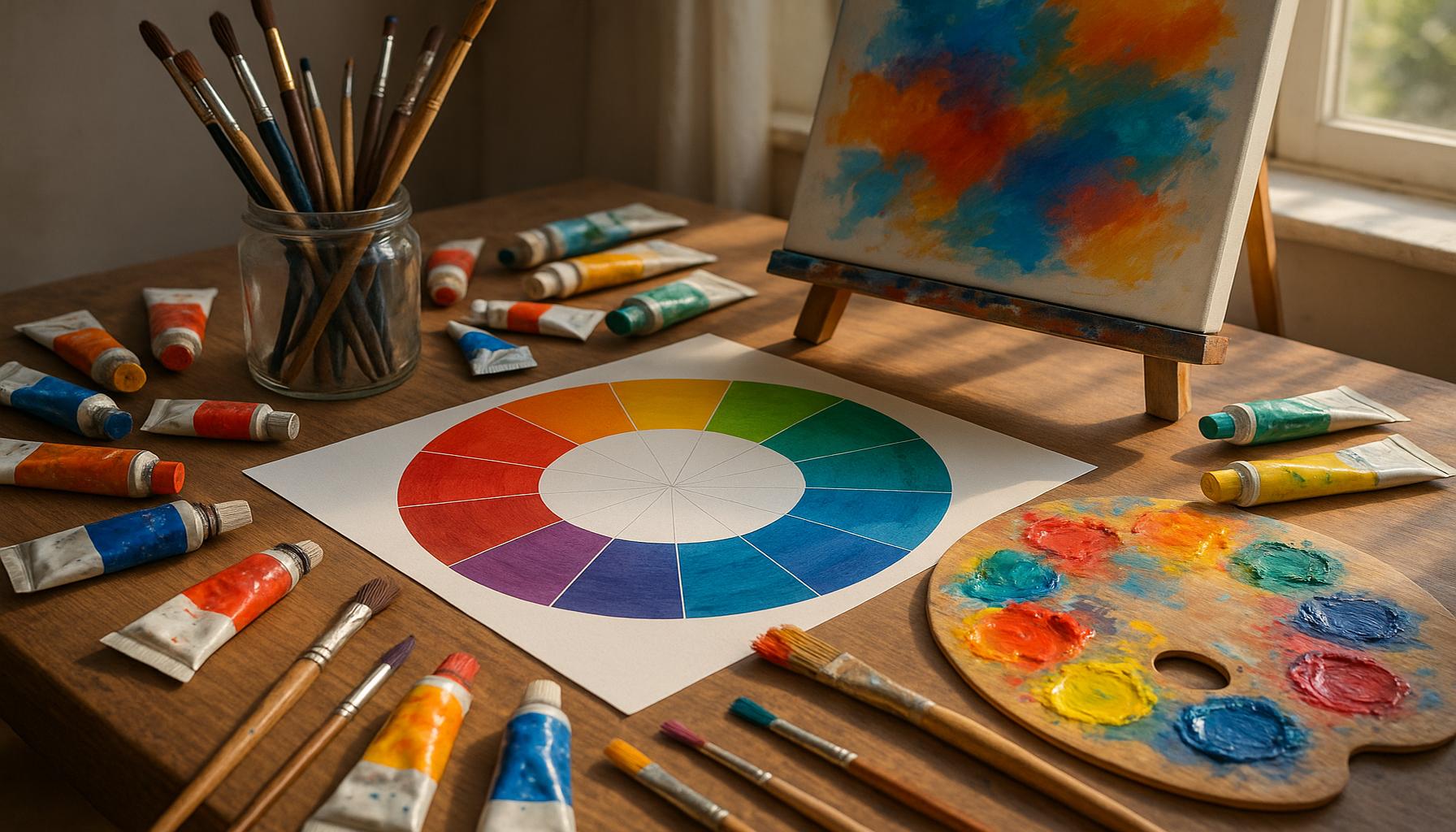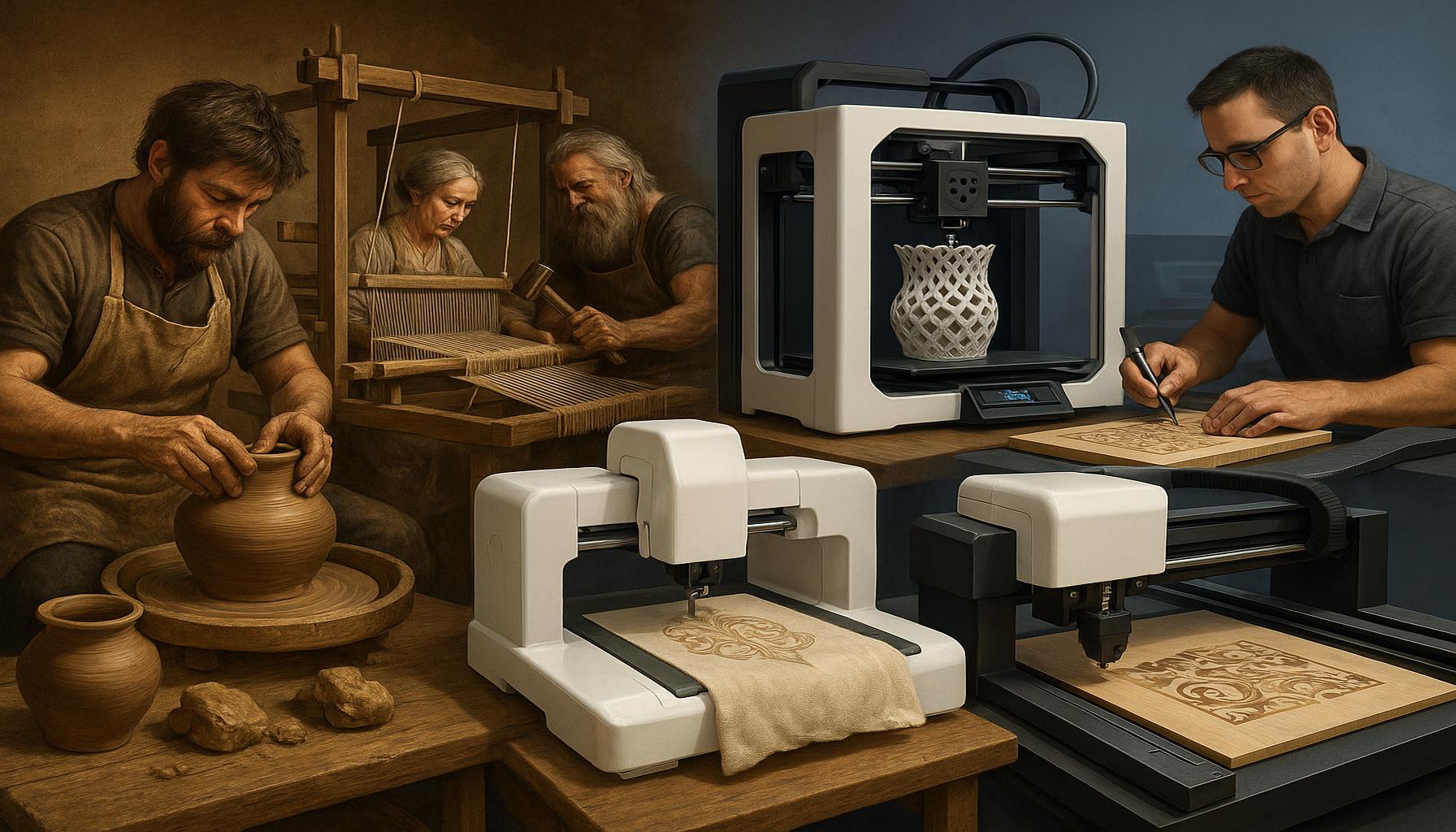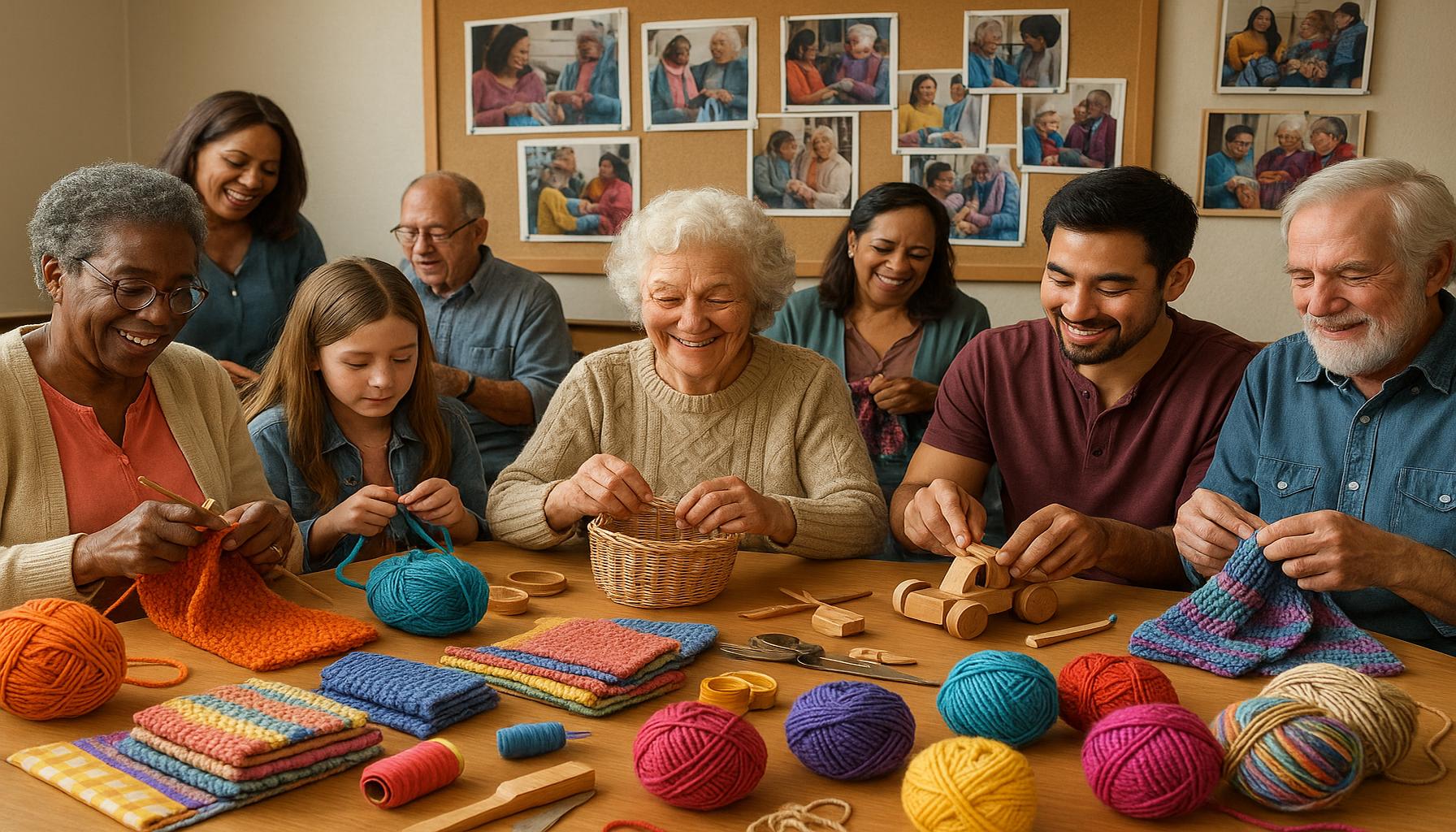The Influence of Crafting on Personal Identity: How Hobbies Shape Our Sense of Self

The Role of Crafting in Defining Identity
In an age dominated by technology, crafting emerges as a powerful avenue for self-expression and personal growth. Many find that engaging in creative hobbies not only inspires joy but also plays a significant role in shaping their personal identity. Whether it’s knitting warm sweaters, crafting intricate pottery, or shaping beautiful pieces of wood into functional art, the myriad forms of crafting provide individuals with a canvas to reflect their true selves.
Self-Discovery: Crafting encourages exploration of unique interests and talents. For instance, a person might discover a passion for knitting that leads them to create not just scarves, but intricate designs that incorporate their favorite colors or represent meaningful symbols. This journey can begin by simply trying a new class or watching online tutorials, eventually leading to a deeper understanding of one’s own capabilities and preferences.
Community Connection: Joining craft circles fosters relationships with like-minded individuals. Local crafting groups in communities across the United States, such as knitting clubs or pottery studios, create a space where creativity and conversation thrive. Events like craft fairs or workshops allow artisans to share their work, inspiring connections that can lead to lasting friendships. These joint experiences often serve as a cornerstone for building a supportive network, transforming hobbies into a shared celebration of creativity.
Therapeutic Value: Engaging in crafting has been linked to improved mental health. The repetitive nature of many crafts, such as painting or crocheting, can have meditative benefits that alleviate stress and enhance mental well-being. Scientific studies suggest that these activities activate the brain’s reward system, producing feelings of satisfaction and contentment, making them an excellent outlet for coping with the everyday stresses of life.
As people delve deeper into various crafting activities, they often find themselves drawn to specific styles or materials that resonate with their personalities. This affinity can lead to:
- Personalization: Creating distinctive items reflects personal taste and values. Handmade gifts often carry more significance than store-bought options, resonating with the recipient on a personal level.
- Skill Development: Mastering a craft can boost self-esteem and confidence. As individuals learn new techniques, they experience a sense of accomplishment that encourages further exploration and perseverance.
- Legacy Building: Handcrafted items often carry emotional significance and family history. Heirloom pieces, whether it be a quilt or a woodworking project, tell stories that preserve cultural heritage and personal memories across generations.
Through crafting, individuals can carve out a niche that captures their essence. This interplay between creativity and identity invites further exploration into how hobbies shape our lives and the communities around us. As more people recognize the importance of crafting in defining who they are, the potential for personal connection and community growth expands, fostering a rich tapestry of identities woven through shared creativity.
DISCOVER MORE: Click here for insights on creative collaboration
Crafting as a Pathway to Self-Expression
Crafting transcends mere pastimes; it serves as a vital tool for self-expression and personal exploration. This transformation begins with individuals selecting materials that resonate with their emotions, preferences, and histories. The act of choosing fabric for a quilt, picking paint colors for a canvas, or selecting wood for carving enables one to make choices that are deeply personal. This process can evoke a profound sense of ownership over one’s creative output, transforming crafting into a medium through which people can express their inner thoughts, feelings, and identities.
Moreover, the diversity of crafting techniques available creates opportunities for individuals to experiment with different forms of artistic expression. Whether it’s pottery, woodworking, or textile arts, each avenue offers distinct methods and mediums that can cater to different personalities. In trying out various crafting styles, individuals often uncover hidden talents that enhance their self-awareness and fuel a desire to further pursue these interests. This journey of discovery can build not only skills but also a deeper understanding of oneself, reinforcing the connection between crafting and identity.
Cultural Identity: Crafting often reflects cultural backgrounds, allowing individuals to embrace and celebrate their heritage through handmade items. For example, techniques such as quilting or embroidery may carry historical significance in various cultures, serving as a medium for storytelling and preserving traditions. As practitioners delve into these crafts, they become custodians of cultural lore, creating pieces that convey shared histories and collective identities. Exploring cultures through crafting helps individuals forge connections within their communities, paving the way for intercultural dialogue and appreciation.
Artistic Evolution: As hobbies progress from casual activities to passionate pursuits, they often lead to an organic evolution of personal style. For example, someone who starts with basic crochet patterns may eventually venture into designing intricate custom apparel. This evolution illustrates how crafting is not static but rather a dynamic process of growth, mirroring changes in personal perspectives and experiences. Individuals find that their crafted pieces can reflect pivotal moments in their lives, such as celebrations, challenges, or growth milestones, further embedding their identity within these creations.
In turn, this creative journey emphasizes the importance of community support. Crafting circles and workshops are abundant throughout the United States, where artisans come together to share skills and stories. These environments foster collaborative learning, allowing individuals to gain feedback and encouragement from peers. The significance of community cannot be overstated, as it provides a platform for sharing diverse perspectives that enhance personal and collective identity. Through these interactions, individuals often glean insights into refining their craft, producing pieces that speak not only to their personal identity but to the larger narrative of their community.
Through these various aspects, crafting emerges as a profound influencer of personal identity. As individuals engage with their chosen hobbies, they concurrently explore and express their multifaceted selves, showcasing not just talent, but also authenticity. This exploration highlights that crafting offers more than creative output; it enriches lives by weaving a deeper understanding of individuals’ identities within the societal fabric. The evolution of self through crafting stands as a testament to the power of creative expression in shaping one’s sense of self.
The Impact of Crafting on Personal Growth
Crafting serves as a powerful avenue for individuals to express their creativity and explore their identities. One of the most notable ways that crafting influences personal identity is through the development of skills and capabilities. By engaging in various crafts, individuals often discover latent talents and competencies that contribute to their sense of self-worth and competence. For example, a person who takes up knitting may find a sense of achievement and pride in their ability to complete complex patterns, which could foster a deeper connection to their identity as a creator. Furthermore, the act of creating something with one’s own hands allows for a unique form of self-exploration. Crafting often involves problem-solving, critical thinking, and decision-making, skills that can translate into other areas of life. As individuals navigate through creative projects, they can gain insights into their preferences, strengths, and even emotional responses. This hands-on experience can lead to greater self-awareness, reshaping how they view themselves in relation to the world.Additionally, the social aspects of crafting cannot be overlooked. The act of joining a crafting community not only provides camaraderie but also opens the door to shared experiences and collective identity. Whether it’s through local crafting clubs or online forums, these connections often strengthen personal identity, making individuals feel understood and supported in their creative endeavors. The exchange of ideas, techniques, and collective achievements fosters a sense of belonging, promoting well-being and reinforcing personal identity.Crafting, therefore, acts as a multifaceted tool that shapes personal identity through skill development, self-exploration, and social connection. Each of these elements plays an integral role in how hobbies can significantly enhance our understanding of ourselves and our place within our communities. Exploring these themes further can provide valuable insights into why engaging in crafting is not merely a pastime but a transformative journey toward self-discovery and fulfillment.
| Category | Advantages |
|---|---|
| Skill Development | Enhances problem-solving abilities and promotes creativity. |
| Community Engagement | Fosters social connections, enhancing personal relationships and belonging. |
DIVE DEEPER: Click here to discover the therapeutic benefits of crafting
Crafting and the Development of Skills
Beyond self-expression, crafting plays a significant role in the development of skills that are essential not only for creative endeavors but also for personal growth and identity formation. Engaging in crafting activities encourages individuals to hone their problem-solving abilities, enhances patience, and fosters a sense of accomplishment. For instance, learning to knit or sew requires precision, attention to detail, and an understanding of complex patterns, turning challenges into transformative learning moments. As individuals navigate the intricacies of various crafting projects, they cultivate resilience and an intrinsic motivation that becomes intertwined with their evolving identity.
Self-Esteem and Confidence: The act of completing a handcrafted item can significantly boost an individual’s self-esteem. Each finished project stands as a testament to their creativity and perseverance, reinforcing a sense of achievement. This boost in confidence often extends beyond the parameters of crafting, influencing other areas of a person’s life. According to a study by the American Psychological Association, engaging in creative hobbies can lead to a marked improvement in overall well-being and mental health. As individuals take pride in their crafted creations, they also recognize their capabilities, which further shapes how they view themselves and their potential.
Therapeutic Benefits: The psychological benefits of crafting are widely acknowledged in modern mental health practices. Art therapy, for example, leverages the creative process of crafting as a means of emotional healing and expression. Activities such as pottery, painting, or scrapbooking are often used in therapeutic settings to help individuals process emotions, confront grief, or work through anxiety and depression. The meditative quality of these hobbies provides a peaceful escape, promoting mindfulness and self-reflection that is crucial for personal identity development. As individuals engage in these creative outlets, they often find clarity and comfort, components that are essential in understanding their identity.
Crafting Communities and Identity Formation
In addition to personal growth, crafting fosters a sense of community and belonging, further enriching one’s identity. Individuals often find themselves part of crafting groups, whether in person or through online platforms like Ravelry or Etsy. These communities offer support, encouragement, and the sharing of knowledge, creating an environment conducive to growth. Through interactions with fellow crafters, individuals can exchange ideas and feedback, gaining insights that shape their future projects and personal style.
- Networking Opportunities: Crafting communities often lead to networking opportunities, where individuals can promote their work, collaborate on projects, and even start businesses. This aspect of crafting can significantly impact one’s personal identity as they transition from hobbyists to recognized creators.
- Shared Experiences: Crafting circles encourage storytelling and sharing personal experiences. By connecting with others who share similar interests, individuals can explore their histories and narratives, using their craft as a backdrop to discuss broader themes of identity, culture, and community.
The dynamic interplay between crafting and personal identity creates a rich tapestry of experiences. From developing valuable skills to benefiting from emotional and psychological support, crafting serves as a multifaceted platform for self-discovery and community engagement. Through these activities, individuals not only produce tangible outcomes; they also weave a sense of self that is nuanced and deeply rooted in their unique crafting experiences.
DISCOVER MORE: Click here to unlock the secrets of artisan bread baking
Conclusion
In exploring the influence of crafting on personal identity, it becomes evident that these creative hobbies extend far beyond simple pastimes; they are integral to our self-discovery and development. Crafting provides individuals with a unique platform to manifest their creativity, while simultaneously building essential skills that foster confidence and resilience. The act of bringing an idea to life through knitting, painting, or woodworking not only enhances self-esteem but also contributes to emotional healing and introspection, proving beneficial for mental health.
Moreover, the sense of community found within crafting groups, whether locally or online, adds another layer to personal identity formation. Through shared experiences and collaborative efforts, individuals connect over common interests, enriching their narratives and perspectives on identity. This social interaction not only nurtures creativity but also establishes a collective sense of belonging, allowing individuals to explore their identities in a broader context.
Ultimately, as individuals engage with their crafting pursuits, they embark on a journey of continuous self-improvement, gaining insights into their values, beliefs, and aspirations. The transformative nature of these hobbies facilitates a deep-rooted sense of self, while inspiring individuals to embrace their uniqueness in an increasingly complex world. As we navigate our personal journeys, understanding and appreciating the role of crafting can serve as a powerful tool in shaping not just who we are, but who we strive to become.


